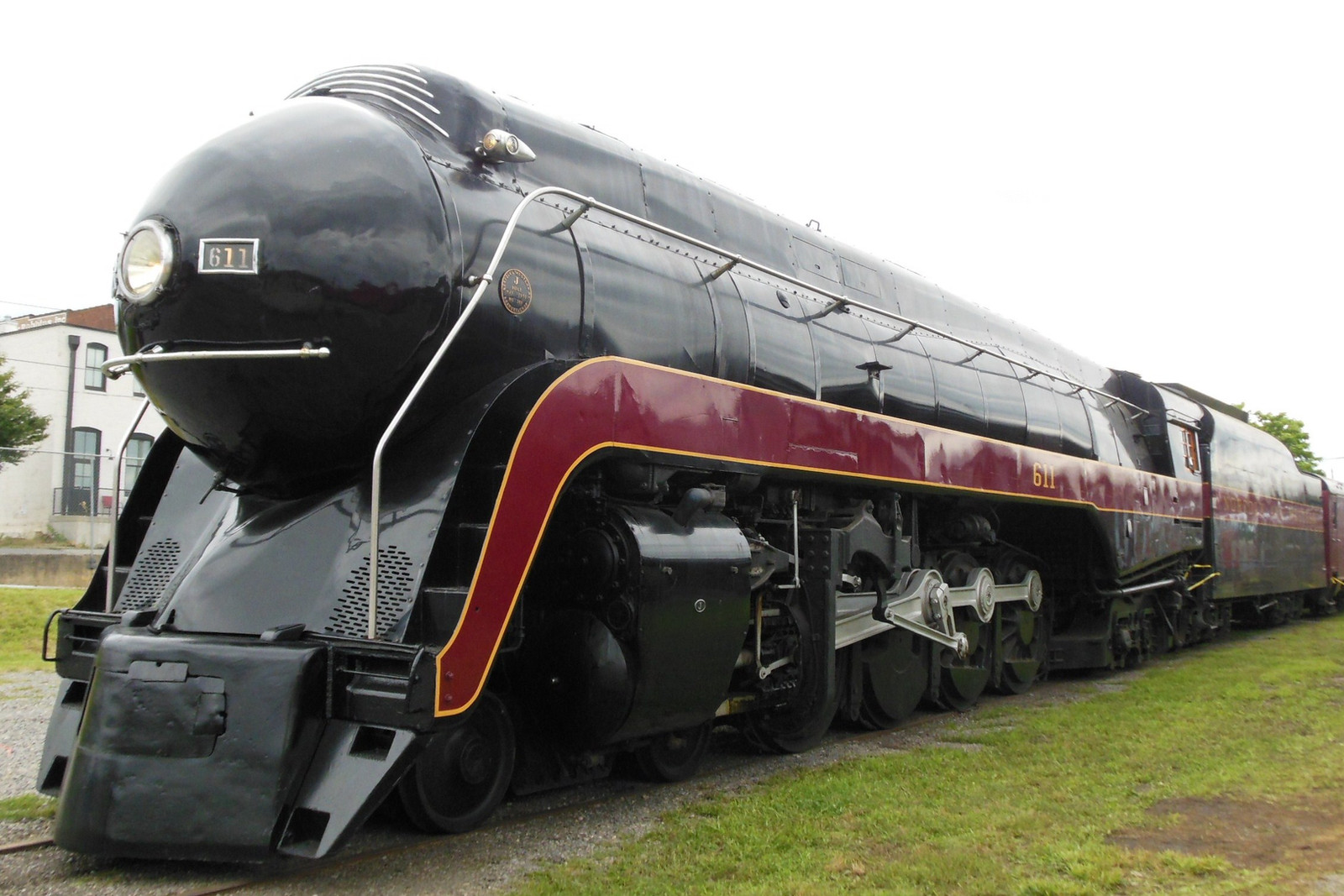HOME | DD
 rlkitterman — NWR Streamliner J-611
rlkitterman — NWR Streamliner J-611

Published: 2013-07-21 20:10:51 +0000 UTC; Views: 6981; Favourites: 173; Downloads: 116
Redirect to original
Description
The Norfolk & Western Railway was mainly a coal-hauling line, so it had few passenger trains. Its most famous passenger engine was the J-class 4-8-4 streamliner, which its own workshops built from 1941 to 1950. The locomotives were very fast for their small wheels, and were the strongest non-boosted 4-8-4 class, so they could pull a 1000-ton train at 110 (!) miles per hour on level ground. They were excellent mountain engines, too, and did not need any help pulling the Powhatan Arrow or the Cavalier across the Appalachians. No. 611, the only survivor, looks as good as ever, but is currently awaiting a restoration to operating condition. It would be excellent to see it run again, but I hope it will not take as long as the Flying Scotsman restoration.Related content
Comments: 14

👍: 0 ⏩: 0

Back on the iron! I was amazed how quickly the restoration was done. She must have been in fantastic shape when she was "retired" in the 90's.
👍: 0 ⏩: 0

Actually throwing some facts in here even if no one is paying attention... The Js were perfectly balanced and designed for speeds of up to 140 Mph even with smaller drive wheels. The frame was strengthened and balanced so precisely that engines were sensitive to poorly laid track. the small drive wheels were necessary for two reasons: The J's were tall and would not be able to pass under many of the low bridges of N&W at the time, also, being in the center of the Appalachian mountains meant they would be climbing steep grades. Smaller drive wheels gave the Js a significant advantage pulling steep grades and also aided fast take-offs when they only had a short distance to get enough momentum to make it up a steep hill from a dead stop. Js were top heavy though and prone to flipping around curves as the 611 did. That's actually the reason we have her today! Her restoration from that derailment put her in much better condition than her sisters and was a leading reason she was chosen to pull the farewell to steam excursion and later why they decided she was in good enough condition to restore to operation. As for how fast they could go it has never been tested nor will it likely. The engineers got nervous operating the top heavy engine with small drive wheel at such high speeds and always backed off the throttle. They used to say that a J's top speed was only limited by the nerves of the engineer.... Now I'm going to go sit in a corner by my lone nerd self... >.>
👍: 1 ⏩: 1

Thanks for sharing that! I think a lot of us would be really interested in seeing it run flat out at 100 miles per hour or faster.
👍: 0 ⏩: 0

Wonder how fast can it go for an hour.
It's a beautiful passenger streamliner engine
👍: 0 ⏩: 2

Thanks! 120-140 miles per hour in theory, though it came pretty close by pulling a 15-car train at 110 miles per hour.
👍: 0 ⏩: 0

It's been said that the Norfolk & Western's 4-8-4 Northern Class J's could reach a speed of 115 miles per hour on steady, flat tracks with 15 passenger cars in tow, but their eight 70-inch diameter driving wheels weren't properly balanced for those speeds. Had the J's been equipped with 80-inch diameter drivers, those speeds could be reached. Also, the 611 has since returned to Roanoke today.
👍: 0 ⏩: 0

ITs move now they say itll take nine months or less
👍: 0 ⏩: 0

Last I heard, someone had offered to restore the 611, so there's a good chance that old girl will return to the rails for the third time.
👍: 0 ⏩: 0


























